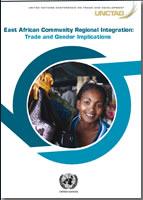
The treaty that established the East African Community (EAC) was signed on 30 November 1999 and entered into force on 7 July 2000.
The main objective of the EAC is to introduce policies and programs to promote cooperation among its member states for their mutual benefit in a wide range of areas including political, economic, social, and cultural affairs, research and technology, defence, security, and legal and judicial affairs.
This report aims to analyse the impact of EAC regional integration on women’s well-being, with a focus on women’s employment. Both descriptive and quantitative analyses are used to this end. Chapter 1 introduces the background on the country and gender profiles.
The country profiles section presents the major changes in the economic and social structure of EAC partner states as well as changes in their trade structure and policies, with a focus on the EAC regional integration process.
The gender profiles section presents the gender situation in EAC member states in the context of trade-gender interaction. It covers different dimensions of gender inequality including education, access to resources, assets, and economic opportunities, and women’s agency and decision-making power. The section also presents the legal and institutional framework on gender equality in EAC member states with a focus on its implications for trade policy.
Chapter 2 presents a quantitative analysis of the impact of EAC regional integration on women’s employment in EAC member states. The macro analysis deals with the role that trade openness and EAC regional integration played in the shift in the sectoral composition of employment for women.
The micro analysis estimates the impact of tariff liberalization within the EAC and with other major trading partners around the world on the female share of employment at the firm level. While doing so, the analysis also distinguishes between different effects for production and non-production workers.
Finally, the main findings and policy recommendations in chapter 3 draw the main conclusions and the related policy recommendations that come out of the study.


